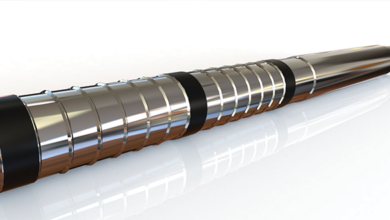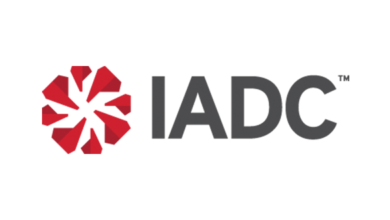People, Companies & Products
Transocean announces retirement of John Stobart
Transocean announced that John Stobart, Executive Vice President, Chief Operating Officer and Chief Performance Officer, is retiring. Keelan Adamson, the company’s Senior Vice President of Operations, assumed Mr Stobart’s responsibilities, effective 1 June.
“Under John’s leadership, Transocean re-established itself as the standard for excellence, delivering industry-leading performance in safety, uptime and drilling efficiency,” Jeremy Thigpen, President and Chief Executive Officer, said. “As a direct result of John’s unwavering commitment to both operational performance and procedural discipline, and to the development of the next generation of leadership, I have every confidence that Transocean will continue to build upon the solid foundation that John helped to establish.”

Maersk Drilling appoints Morten Kelstrup as new CCIO
Effective 1 May 2018, Morten Kelstrup has taken on a new role as Chief Commercial & Innovation Officer (CCIO) for Maersk Drilling. Mr Kelstrup joins from a position as Managing Director of Maersk Oil UK.
“His proven record of successfully driving business innovation will be a great asset in Maersk Drilling’s commitment to reducing well costs for customers,” Jørn Madsen, Maersk Drilling CEO, said.
Mr Kelstrup will lead the joint Commercial and Innovation function that was established by Maersk Drilling to create value for customers through partnerships, digital solutions, applied technologies and new business models.
i-Tech, Leidos form 5-year digitalization partnership
i-Tech Services and Leidos have announced a five-year digitalization partnership agreement to increase efficiencies in i-Tech’s Life of Field capabilities by providing clients with greater insights into operations through the field lifecycle. The partnership leverages Leidos’ expertise in digitalization and enables i-Tech to automate manual processes and reduce operating costs.
Share Support Holdings inks exclusive supply deal
Shale Support Holdings has become the exclusive supply company for a Wysox, Pa., facility. The company will work alongside Shale Rail, a part of the Northeast Freight family of companies, as a strategic partner for supply chain and transportation needs.
Delmar, MDL to launch wire rope inspection system
Delmar Systems and Maritime Developments (MDL) have formed a joint partnership to launch LiveWire, a solution for wire rope inspection and change-out services. LiveWire will cut time and operational expenditures for wire rope handling, maintenance and inspection for large-diameter wire ropes.
TWMA to provide waste management for Nexen
TWMA has secured a five-year contract with Nexen Petroleum UK for the provision of drilling waste management and associated services on multiple assets in the UK North Sea. The contract commenced at the start of the year. The project will see TWMA provide drill cuttings processing both onshore and offshore.
Vryhof secures contracts for anchoring solution
Vryhof Anchors has announced several contracts for its STEVSHARK REX anchoring solution: with Perenco Congo to support permanent moored assets for the La Noumi FPSO in the Yombo Field offshore Congo; with Maersk Drilling in Trinidad; and with EPC contractor CNGS Group in the Caspian Sea.
KCA Deutag adds assets in Oman, Saudi Arabia
KCA Deutag has completed its acquisition of the Omani and Saudi Arabian businesses of Dalma Energy. As a result of this acquisition, KCA Deutag is now one of the largest owners and operators of drilling rigs in the Middle East, with 46 land rigs in the region out of a total of 83 rigs owned and operated by KCA Deutag globally.
Tally acquires Gearcon, Gearcon Drilling Tools
Tally Energy Services has acquired all assets of Gearcon and Gearcon Drilling Tools. The acquisition will expand Tally’s offerings to include downhole drilling motors and strengthen the firm’s ability to optimize its directional drilling services offerings.
ABB to provide automation on Johan Castberg field
ABB will provide integrated ABB Ability automation and safety systems to Equinor’s Johan Castberg oilfield development project in Norway. ABB will provide integrated automation and safety systems, including advanced simulation and related services. The order is valued at approximately $25 million.
Add Energy to provide HSE software to Neptune
Add Energy has secured a three-year contract with Neptune Energy for the provision of environmental management software, NEMS Accounter and NEMS Panorama. The software will help Neptune to ensure operations are compliant with environmental regulations, as well as consistent and efficient HSE reporting.
3T Energy appoints new finance director
3T Energy Group has appointed Katy Penny as Finance Director. She will be responsible for implementing procedures to create a solid financial platform for expansion and future acquisitions.
Gardner Denver opens Permian Basin facility
Gardner Denver Petroleum & Industrial Pumps has opened a facility in Odessa, Texas, expanding the organization’s presence in the Permian Basin. The facility will be fully stocked with aftermarket drilling supplies, including consumables and modules, 24/7 field service and customer support.
RAMCO to inspect, mobilize casing, tubing for Equinor
RAMCO has signed a contract with Equinor for the inspection and mobilization of casing and tubing in Norway, worth more than $10 million a year to 2024. This new contract, which is initially for two years, covers sites in the ports of Florø and Sandnessjøen and will see RAMCO deliver its ready-to-run service, where tubulars are fully prepared for use before they reach the rig site. There is agreement in place for extension options after two years and four years.
PRODUCTS

Balmoral launches new drill riser buoyancy system
Balmoral Offshore Engineering has launched a drill riser buoyancy system that incorporates low drag vibration and suppression capabilities. The Balmoral DuraFloat LDV and Balmoral DuraGuard LDV, integrated and retrofit vortex-induced vibration suppression solutions, respectively, were developed to prevent such motion from occurring. DuraFloat LDV is an integral part of the riser buoyancy module, while DuraGuard LDV is a retrofit option.
RFID technology reduces iron inventory efforts
Weir Oil & Gas has introduced its second-generation SPM Radio Frequency Identification (RFID) technology and RFID Mobile App. The RFID enhancements enable iron fleet maintenance in the field, even in the most remote locations. For a 900-piece fleet of iron, it typically takes three employees three full work days to account for all of the iron in the field. However, Weir’s RFID AMP technology allows 900 pieces of iron to be tagged and accounted for in less than 60 minutes.
MacArtney deploys custom version of its MUX on ROV
MacArtney Group has created a custom version of its EMO DOMINO-7 fiber optic multiplexer system (MUX) for installation on a remotely operated vehicle (ROV) in Singapore. The custom version of the MUX includes upgrades to the subsea survey and camera interfaces of the ROV, which ensure that large amounts of data and video can be reliably transmitted from the ROV to shore.
InterMoor introduces acoustic release connector
InterMoor has introduced its Inter-M Release mooring connector. Acoustic-release mooring connectors allow a rig’s mooring legs to be released remotely and immediately, in case of emergencies, severe weather events or simply to save time and money during rig moves.
New LWD service can map 200+ feet from wellbore
Halliburton has released the EarthStar ultra-deep resistivity service, a logging-while-drilling technology that helps operators map reservoir and fluid boundaries more than 200 ft (61 m) from the wellbore. The service delivers a comprehensive reservoir view so operators can eliminate costly pilot holes and sidetracks, make informed geosteering decisions in real time and better plan future field development. It uses azimuthal electromagnetic measurements to map the geological structure around a wellbore, enhancing knowledge of the reservoir for improvement of recovery potential.
Weatherford introduces new push-the-bit RSS
Weatherford has commercially launched the Magnus RSS, a new push-the-bit rotary steerable system (RSS) that features independent pad control, a rotating bias unit with minimal bottomhole assembly (BHA) stabilization, real-time BHA diagnostics and autopilot functionality. The tool is capable of achieving up to 10º/100 ft, and it can also operate up to 300 RPM under a downhole motor
GEODynamics introduces frac plug technology
GEODynamics has released the EVOLV+FracTrap Zone Isolation System, which provides ball retrieval and composite plug technology in one tool. This combination allows operators to test casing pressure prior to perforating operations.
Wood develops new rugged wearable camera
Wood has developed a camera technology that can stream video and store data from remote work locations, including offshore, in partnership with technology company Librestream Technologies. The Onsight Cube is a rugged camera that can be worn on a helmet, chest mount or a mono-pod to access high or difficult-to-reach areas and connects wirelessly via bluetooth to a handset.




